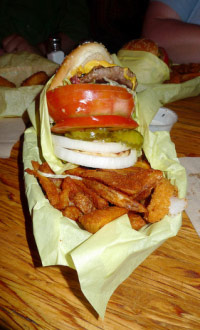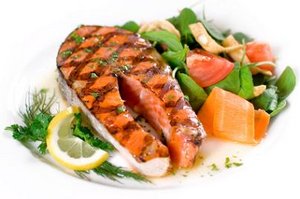Spotting High-Fat Ethnic Food Choices When Dining Out
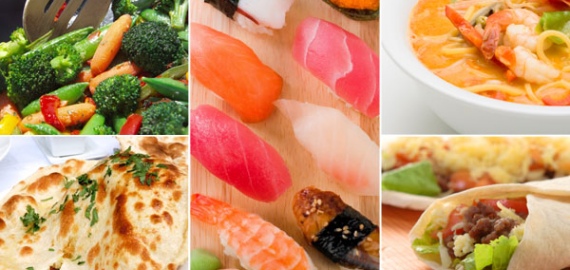
(HealthCastle.com) More and more of us eat a significant number of our meals in restaurants instead of at home. But making sense of the menu can be tricky in ethnic dining spots, especially when one is unfamiliar with the cuisine. Which terms signal higher-fat choices?
Spotting the High-Fat Choices in Ethnic Cuisines
Indian
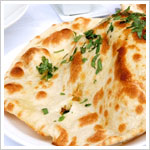 The following menu items are usually deep-fried: samosas, pakoras, papadum. In one of the more famous dishes, chicken tikka masala, the chicken pieces are usually grilled, but are then added to a rich creamy sauce, so it’s the sauce that will do you in on the fat content. Curries in general are also rich in cream or coconut milk, so indulge sparingly. A lower-fat choice is tandoori or tandoor (marinated meat cooked in a special clay oven). Just watch what you dip the meat in.
The following menu items are usually deep-fried: samosas, pakoras, papadum. In one of the more famous dishes, chicken tikka masala, the chicken pieces are usually grilled, but are then added to a rich creamy sauce, so it’s the sauce that will do you in on the fat content. Curries in general are also rich in cream or coconut milk, so indulge sparingly. A lower-fat choice is tandoori or tandoor (marinated meat cooked in a special clay oven). Just watch what you dip the meat in.
Mexican
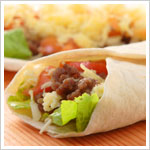 Common deep-fried items on Mexican menus include hard tacos (including taco salads, which tend to have deep-fried taco shell bowls), tortilla chips that come as a side, tostadas, and chimichangas. Opt instead for tamales or burritos that are steamed. Be mindful of portion sizes, even for steamed versions, and be wary of “wet” versions of tamales and burritos that are drowning in heavy sauces.
Common deep-fried items on Mexican menus include hard tacos (including taco salads, which tend to have deep-fried taco shell bowls), tortilla chips that come as a side, tostadas, and chimichangas. Opt instead for tamales or burritos that are steamed. Be mindful of portion sizes, even for steamed versions, and be wary of “wet” versions of tamales and burritos that are drowning in heavy sauces.
Chinese
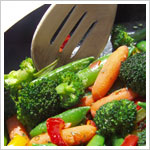 It’s pretty obvious that spring rolls are deep-fried. But did you know that many noodle dishes are also high in fat? Chow mein noodles are pre-fried to begin with, and then more oil has to be added during cooking to prevent the noodles from sticking. “Pan-fried” rice noodle dishes are also high in fat, because so much oil has to be added to keep the pieces slick and separated. Many items with the descriptor “crispy,” and those “with special sauce,” will be high in fat as well. In popular dishes such as sweet and sour pork or chicken, the meat pieces are also battered and deep-fried before the sauce is added. For lower-fat choices, look for sauteed, braised, or steamed items or noodle soups, and ask for any sauces to be served on the side.
It’s pretty obvious that spring rolls are deep-fried. But did you know that many noodle dishes are also high in fat? Chow mein noodles are pre-fried to begin with, and then more oil has to be added during cooking to prevent the noodles from sticking. “Pan-fried” rice noodle dishes are also high in fat, because so much oil has to be added to keep the pieces slick and separated. Many items with the descriptor “crispy,” and those “with special sauce,” will be high in fat as well. In popular dishes such as sweet and sour pork or chicken, the meat pieces are also battered and deep-fried before the sauce is added. For lower-fat choices, look for sauteed, braised, or steamed items or noodle soups, and ask for any sauces to be served on the side.
Japanese
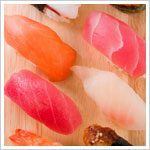 The most well-known term for deep-fried items in Japanese restaurants is tempura. Other items that are often deep-fried include katsu or karaage-style dishes. Yaki soba is pan-fried noodles, which can be quite oily. Safer bets are to request broth-based noodle dishes like ramen and udon, robata or yakitori (grill) items, or just the traditional sushi.
The most well-known term for deep-fried items in Japanese restaurants is tempura. Other items that are often deep-fried include katsu or karaage-style dishes. Yaki soba is pan-fried noodles, which can be quite oily. Safer bets are to request broth-based noodle dishes like ramen and udon, robata or yakitori (grill) items, or just the traditional sushi.
Southeast Asian - Thai, Malay, Singaporean
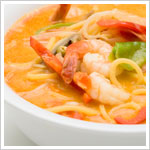 Any dish sporting the term “goreng” or “char” in its name signals either a deep-fried or higher-fat choice. Southeast Asian curries are coconut-milk-based too, so enjoy sparingly.
Any dish sporting the term “goreng” or “char” in its name signals either a deep-fried or higher-fat choice. Southeast Asian curries are coconut-milk-based too, so enjoy sparingly.
The Bottom Line
While it would be nice to make every meal from scratch, the reality is that many of us rely on takeout or eating out as part of our regular meal rotation. Learn to spot the higher-fat menu choices so you know how best to manage your fat allowance. Another easy way to manage your intake, as suggested by Monica Reinagel in her book Nutrition Diva’s Secrets for A Healthy Diet, is by “working the small plates.” That is, order two or three small appetizers and make that your meal.
-
The 3 Fruits That Can Reduce the Risk of Obesity
You may want to add plums, peaches and nectarines to your healt
-
Weight Loss Nutrition – 3 Square Meals vs 6 Small Meals a Day
You may have heard or read about the idea that eating
-
Level Up Your Confidence With The Way You Look
Most of the time, our level of confidence is a directly related to
-
The Guide to Getting Rid of Love Handles
It strange that they are called love han
-
Find Out Natural Weight Loss Remedies
The busy lifestyle of people nowadays along with the stress on junk o
-
Loosing Weight with A Healthy Diet, Choosing An Adequate Diet Plan
Loosing weight seems a big problem when it comes to designing a die
- DON'T MISS
- What About Easy Diets to Lose Weight Fast?
- New And Fascinating Tips About Fitness And Health
- Awesome Tricks For Achieving Stomach Weight Loss Fast
- What To Expect After Gastric Bypass Surgery
- Plot Your Weight Loss Course
- 5 Thoughts That Keep You At War With Your Body
- Vegetarian Weight Loss Tips for Women - How to Lose Belly Fat Fast
- Do Those Weight Loss Plans Really Work?
- How To Lose Pregnancy Weight And Get Down To Your Desirable Figure
- Intensive Diabetes Intervention May Cure Disease, Sometimes

